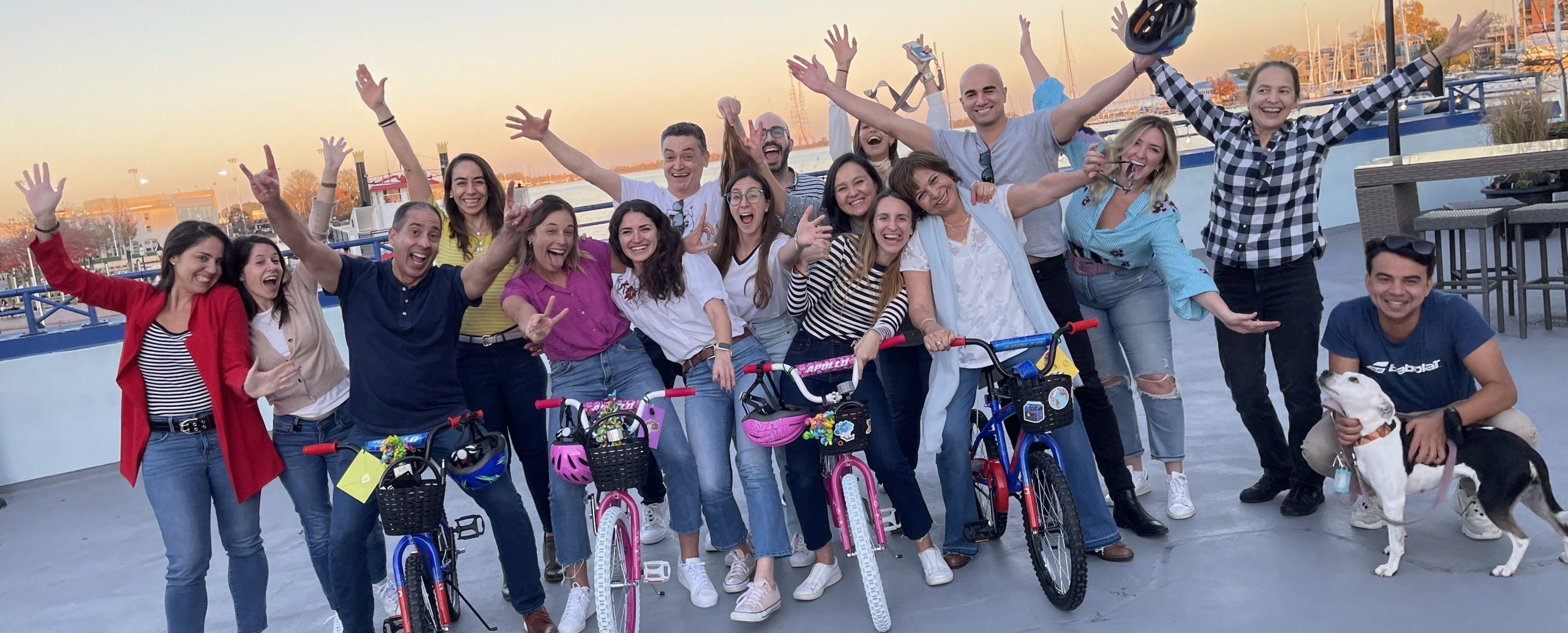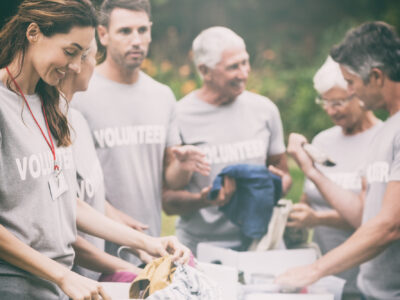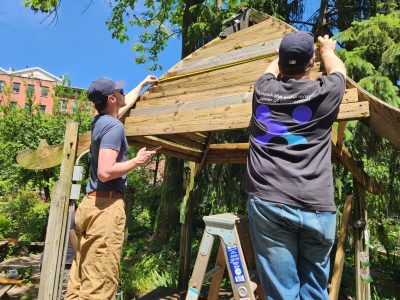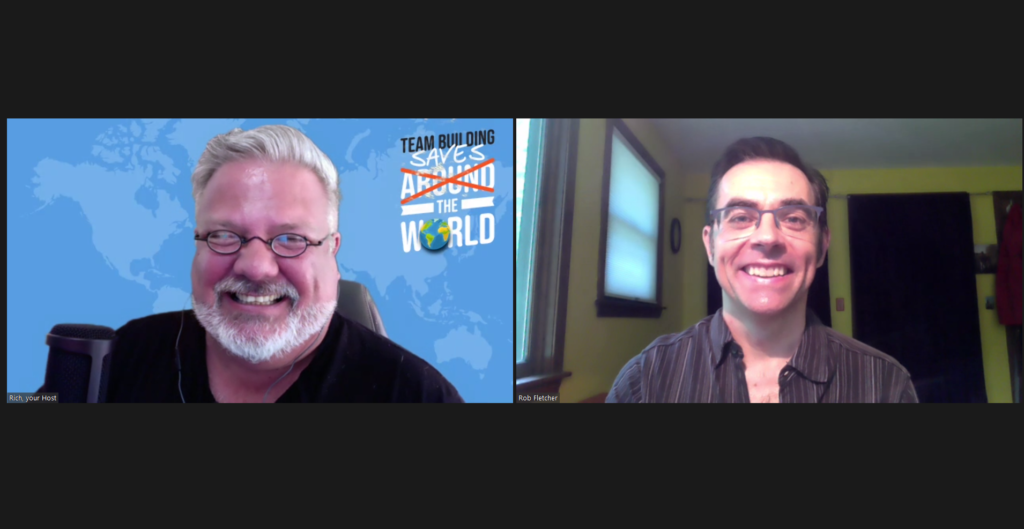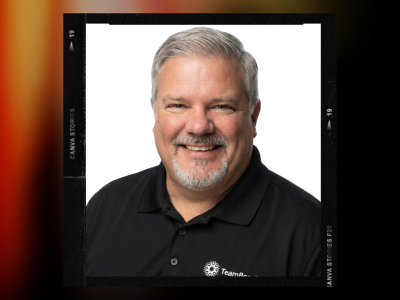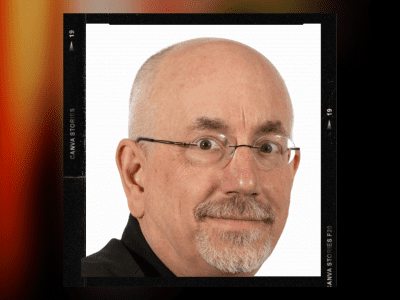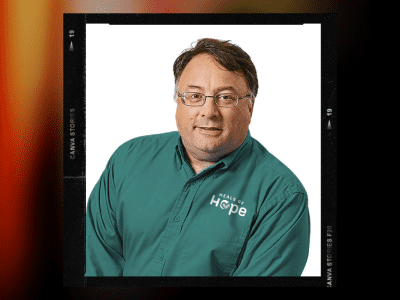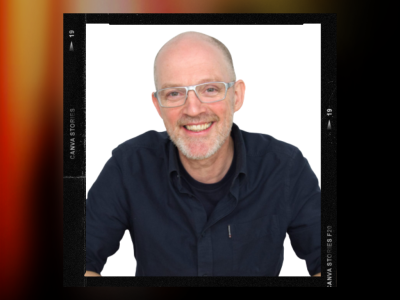STRONG TEAMS DON’T HAPPEN BY CHANCE 
Building Your Resiliency
w/ Rob Fletcher
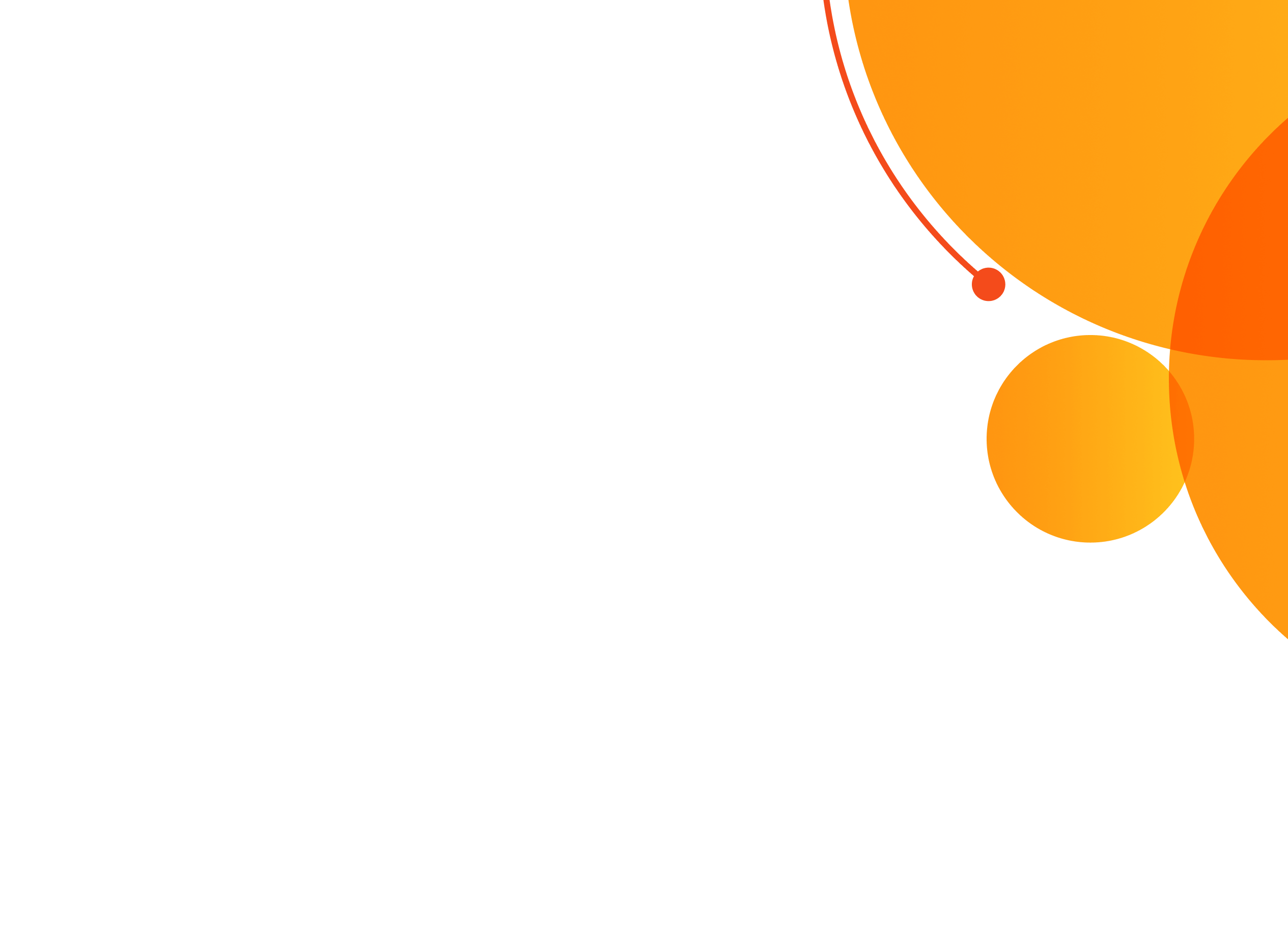
Use the buttons above to listen now.
Transcript - Building Your Resiliency
Rich: On this episode of team building saves the world.
Rob: I don’t recommend things. I don’t actually try to see if they work. Right.
Rich: Okay. Good.
Rob: So September, here we go. Want me back in the office? Wow. And that’s what works. It’s like the, you know, the hair club for men guy, like he’s like, I’m not only president ,I’ve also used the stuff, but the biggest number one challenge that. People say from working from home and there’s lots of challenges.
Rich: Hello team. Once again, it’s me. Friend, Rich Rininsland host of team building saves the world. The show where I speak to the leaders and innovators, the team building industry from all across the globe, trying to find out what about that industry is so important, especially in the world of today. And today we’re talking about the important topic of self-care and resilience.
With virtual trainer facilitator, Rob Fletcher, the first I need to share some love with my support as a team bonding. If your team is ready to experience teamwork through the power of play, to visit team bonding.com to learn more now team join me in welcoming a consultant author, international speaker, and the founder of Quixote consulting.
Mr. Rob Fletcher,
Rob, that is just a small group of people. I keep checking up on them. Just to applaud you. How are you today?
Rob: Doing great. Thanks for having me on.
Rich: Thank you. Why don’t we start off real nice and simple. Just tell my team a little bit about yourself and how you got involved in this industry.
Rob: Sure, absolutely. I’ve run a company called Quixote consulting and we do team building and team development. And I have a strong relationship with team bonding, been in the industry for just about. 20 years, just over 20 years, somewhere around there and started an interesting path. I started working with kids and doing nature education, outdoor education, and then learn team building and did high ropes courses, and then moved on to college groups, moved on to corporate groups and then moved into more classroom-based stuff.
And really my passions, my two passions. Depth and fun. So this seems like the best cross section of those two places where you really help people tangibly and also make it interactive and fun and play games while we’re doing it.
Rich: What do you mean by depth?
Rob: Depth means, uh, you know, like it’s not just for fun, like some things like people saying, oh, let’s go bowling and it’s team building.
Rich: Right.
Rob: And it’s like, it’s just fun, but you’re not really, really learning more about each other as a team. You’re not, you know, making the ties to workplace and things like that. So the depth part is more like real helpful. That people can use both within the team setting at work, but then also in their personal lives as well.
Rich: And I got that. I see one of your webinars with team building, with team bonding, rather about the self-care and resilience for yourselves. What led you in that, that direction?
Rob: Well, that’s, uh, I guess a personal passion because so much of that is around like whole person and that’s so to me, so important, uh, you know, the best leaders today are really thinking about the whole people and taking care of. Your body, your mind, your heart, your, you know, your values, your people, your connection, and things like that. So I, you know, do a wide range of things. And, uh, and topics, but the resiliency is personally meaningful for me. And it feels like the biggest kind of help personally, that people can have both work and home life.
And which is really one synonymous at this point, one of the same, right. Also it’s the, you know, it’s, it’s what’s most needed, uh, regardless of COVID, it is. Really the biggest challenge for people.
Rich: How so?
Rob: Well, it’s just that I think the more uncertainty happens in life and the more upheaval happens in life.
And the more, the more we’re asked to do more with less and the more we see radical change happening and things we don’t know happening. And the more we work from home or are forced back into the office, you know, one way or another, there is an incredible amount of stress that keeps piling up on that.
There is no signs of us just taking a breath and as a country, as a world, and just being like, okay, let’s relax a little bit where everybody’s doing. Okay. It’s just more and more stress,
Rich: Especially now. COVID is here. It’s going to be a part of our lives for generations, more than likely let’s get into it. What are some examples? I mean, how can people help their stress, especially while still working?
Rob: Well, the most important part, the most important piece. And I, you know, when we do a full or half day or a full day of resiliency training, we’ve, there’s an eight step model. But even on those, like the one hour webinars we focus, especially on the base three.
And you think of it as a pyramid, meaning like the first one you the most necessary. The second one can’t happen without the first one and the third one. And so on. The base is sleep is increasing the amount of sleep that you get and the quality of your sleep you get. And it is, it is both the most important and it’s the lowest hanging group on the tree.
Everybody. I know, uh, you know, some people may be exercising. Some they may be eating, right. Some people may be having good connections, but nobody says, Hey, I have enough sleep and I’m getting just the amount I need. Yeah.
Rich: Oh, I do. So let’s start there because I have for years had problems with sleep as I’m getting older, especially suddenly I’m waking myself up with snoring and I, I have what I consider good sleep hygiene, meaning that I don’t watch screens, you know, up to it’s like an hour before, before I’m getting ready for bed.
It’s about getting myself wind down relaxing. I have a little white noise machine just to, just to help quiet down the sounds from the house around. But I still find myself waking up over and over again in the middle of the night. What are some of the things you could, you could coach for someone like myself.
Rob: Yeah. Well, first of all, kudos to you. You are ahead of most of the population, because most people are looking at their screens on their phones just as they start to close their eyes. Yeah. So, you know, things to think of. And one thing to note is that it is a myth that people, as we age, we need less. It is just harder for us to sleep.
So you are experiencing that firsthand, but him and I empathize and I I’m right there with him. It is, it is more challenging. Gees if only when I was a teenager, you know, you could just close your eyes and like 11 hours later, you’re like, wow, I was, that was pretty good. All right. What are we doing for fun today?
Um, so first of all, the things that you’re doing, right, uh, definitely, uh, no screen or an hour before you go to bed, that’s super helpful. And the closer you get to be. It is helpful to do the, um, the warming of the screen and meaning that there’s night shift on your phone. And so I know if you have an iPod, there’s this thing exactly called night shift.
Um, if you’re on your, on your computer there’s apps, I have an app on my computer called flux, but that is not the only one. And basically I have it set for right around sunset time. It automatically yellows the screen. So decreases the blue light and the blue. Not only the content of what you’re looking at.
Rich: Right.
Rob: But it’s the blue light itself. Blue light is basically signaling to your brain. Wake up, wake up, wake up, wake up. So if you’re watching that and you’re getting tired, you’re still getting that message. The wake up, wake up, wake up, and your brain is a plane, but it takes time to ascend and takes time, especially to descend into sleep.
And so, for example, we always get that, that notification when we’re on the plane, okay. We’ve reached 10,000 feet, turn off your electronics. You know, we, we need that for that slow descent down. And that is exactly what you’re thinking. You know, you want your, you want some kind of alarm, like I have an alarm on my Fitbit, but just taps my off task.
My hand tells me like, oh yeah, right. No more screens for the rest of the night. And if I must, you know, there’s always a must, then you make sure that you use a screen that is warmed up. That is, that has the yellow light in there, the blue light reduced. So that’s definitely, so another thing that you’re doing right is the white noise.
That’s super helpful. I say the best thing you can do with your bedroom is to make a bed caves because our brains, even though we like to think that we’re modern human beings, we are really Neanderthals, cave people at heart or brain, I should say. And so you think about, okay, what was a cave light, that’s where they slept.
That was a safe spot for them. Right. And it is three things about the cave. There’s, it’s cool. It’s dark and it’s quiet. So you want to find a way to decrease the temperature, including in the winter too. But you know, in the summer it’s great to have air conditioning or if you can have, you know, the open air or whatever, whatever it takes, but to decrease the temperature as cool as you can take it.
But without being ridiculously. It’s better to have the room to colds for sleep and for you to use a blanket then for it to be too warm. So there’s something that also, even though the pressure of a blanket is reassuring for people. Okay. So you want that, and then you also want it as dark as possible. So I’ll give you an example of what I do when I’m on the road in a hotel, getting ready to see a client.
The next day, I turn off the light when it’s dark. And I look around the room and I look to see where is the glowy. Where’s the stuff. How can I decrease this light? Yeah. So in, in hotel rooms, there’s always like that bar of light coming underneath the door. So I put a towel under there. There’s a glowing symbol coming from the TV that is facing the bed.
So I put a towel or a pillow over that. There’s, they’ve got the clock aimed at you. And so I flipped that over. I put it on the ground, put it on the floor, things like that only takes about like five minutes and man it’s so much better and make it, or like testing the blackout curtains things. So, you know, if you can use a white noise, white noise is great.
The, you know, the S the sudden noises and that random noises that wake us up, which makes sense. We don’t want to get eaten by something while we’re sleeping. So there’s some part of our brain that’s doing that. So what noises are great earplugs are also okay. Or if you can’t decrease the light in your room, you know, you can wear eye shades, things like that.
So that’s bed paid. Screen-free, you know, sleep schedule is super important and to train your brain. Like this is the time I go to bed and this is the time I wake up. Right. And the closer you can adhere to that, including the weekends, it’s like the weekends, your brain is just like, whoa. Okay, great. I can stand up too and sleep until one in the afternoon.
And then, you know, and then I should be fine on Monday morning when I have to wake up at seven or whatever, something like that. So sleep schedule super important do you have questions about that? Or I’ve got, I’ve got a ton of these, these,
Rich: no, no, I actually,the only questions. And the question about you, where did you get, where did you learn about all of this?
Where did you find out about it for yourself?
Rob: That’s the fancy term for me is an autodidact. Meaning I love teaching myself stuff. I love learning. I love reading. I peek out on books. I get on research articles like those really dry stuff and just gather things, you know, my background. Is in business finance.
I, you know, I went to NYU for business finance, and then I went to SUNY new Paltz for jazz guitar performance. So I, I like to think I’m a Renaissance man, but it’s probably just, I’m like, I’m a Jack of all trades master of none. I think things that get me excited, I dive deep and hard and fast. And so, you know, sleep is just like, seems like the, the most important thing.
So spent a lot of time.
Rich: Okay. So we have pretty much a population right now who are still working from home with a small percentage who were being forced back into not, I don’t want to say forced back who being brought back into the workplace.
Rob: Forced is an okay Word.
Rich: Right.
Rob: But for those cases, I have a lot of coaching clients where they’re just like, oh, So September, here we go.
Want me back in the office? Wow.
Rich: But for those who are, let’s start with those who are working from home, what kind of things can they be doing for themselves? Because when I first went, when the pandemic first hit, my big panic was the fact that one month’s worth of work went away because I had been doing everything outdoors, going to clients, you know, meeting them in hotels, facilitating their events so on.
So. That all vanished in a week as the panic levels were up there. But then we pivoted quickly and started doing live virtual facilitation. But now I’m stuck in my office chair here at my home, staring into a computer screen for what can be 8, 10, 12 hours a day. Yeah. So what do you recommend for somebody who’s finding themselves in that situation
Rob: well, the, the biggest three words that I can tell you is mind the gap and what that means is like, when you’re working from home work home, there is no gap, right. It’s just all flows together. And it basically means it’s work because that’s the bulk of the time that is being spent when you’re awake. So places that you can put, so you put gaps wherever you can, uh, conscience gaps, and that you do every day until it gets unconscious.
Meaning like in order to form a habit, you just got to do it every day, consciously or up to 40 hours.
Rich: Um, I try convincing my 15 year old daughter that exact same thing.
Rob: Oh, that’s great. Yeah. So basically like you look for gaps and so here are candidates for gaps. Okay. You know, what’s your quote, unquote commute. And what does that, what that means is like, there was a commute, most of us, for me, like you, uh, we had really random commutes where sometimes it was like a day in a plane but for most people, it is a 30 minute to two hour drive in the morning, 30 minutes to an hour drive in the afternoon.
And, uh, and yeah, I was talking to people in April, along with last year with them freaking out. They’re also like, oh yeah. And I’ve got like two extra hours of my life and my day, and I’m going to do so many. And basically the research says that we all just ended up working two more hours a day. Right. Um, you know, in the U S anyway, so, uh, like Scandinavian countries, like Denmark is really interesting.
Denmark spiked with their work hours, just like every other country, but then they took it back down and they are back to where they are in terms of the hours that they work in the day to pre COVID levels. We are anywhere between 40 minutes to two hours more. Uh, from pre COVID levels and we no sign of us doing any less.
So, you know, so you look at the gaps, like what’s your commute, what’s your, what’s your gap that you can put between home and work in the morning? Could you maybe go for a short walk or could you do something like something enjoyable for yourself and what’s your gap at the end of the day? And then also think about like, what’s my lunch hour.
Don’t ever eat your lunch in front of your screen at work at home. Anything like get away from the screen, like step away. Um, so, you know, you put there, you put these gaps. And then you put gaps in, in, throughout your day where you have some kind of reminder. And so for me, I have a 30 minute timer on my phone that is ready for me to set.
And I, I do this, I don’t recommend things. I don’t actually try to see if they work. Right. Okay, good. And this works, this is called the Pomodoro technique. And so, you know, we can’t do it, obviously when we’re in front of, in a meeting or in clients or something like that, we’re doing individually. You set your timer for 30 minutes or did I say 20 minutes is fine, but 30 minutes seems to be the sweet spot for me.
Okay. So that your time for 30 minutes, you put your phone out of your reach. So you, you have to actually get up out of your chair in order to turn your timer off. And at the end of 30 minutes, at times off at the very least, you now have done 10 steps that you wouldn’t have done. So you move just a little bit more because moving is, is so key for resiliency and it’s so key for the brain.
Because, uh, the way the brain works is we are not like a marathon brain, user, meaning like slow and steady. And the long like all day long, like we can just go with the same pace, that same like medium pace, you know, or slow pace, depending on how fast you might want to run a marathon. It never does. I don’t know, tried the Boston marathon when I lived on the route, but, uh, I didn’t get very far so, um, so, so yeah, so it’s like instead of a marathon we are meant, or the way our brains work best is to sprint stop, sprint, stop, sprint stop.
So you do 30 minute sprint, and then you pause for five to 10 minutes and then you do another 30 minute sprint pause, five to 10 minutes, 30 minutes, sprint pause to five to 10 minutes. So those are ways to put gaps in throughout. But the biggest number one challenge that people say from working from home and there’s lots of challenges and lots of wonderful things, but lots of challenges, the biggest number one challenge is ending work and going reentering home life.
It’s the end of the day is the hardest part, right? So that really needs just like you need to sleep schedule. You need to end at work. And so that’s huge to have an end to work schedule and you set your alarm, set an alarm for 10 to 20 minutes before that time and use that time to wrap up whatever you’re doing.
Clean up, anything, closing up things that are open, uh, refresh your to do list, get yourself ready for the morning. So you can start with that with a fresh mind. And then at the end of that time, if you are using at work. And a work phone, then you turn those off and you put them away. So you, what you want to do at the end of the day is make it easy for you to do what you want to do.
What is good for you? What was helpful for you and your family to do and make it hard for you to do this stuff that is bad for you, which is to check your email and stuff, things like that. And then the other piece is if you are working at different time zones and are going to send an email to somebody else on your team, right?
Send it the next morning. So write it, save it. You know, it’s like somebody’s guaranteed somebody on your team is at your table as at the dinner table with their family, having a lovely dinner. Sure. And they’re getting a ping with a meeting invite for two weeks from now, from you. And you’re like, don’t be rude.
Uh, you know, don’t be rude to each other, like really respect each other’s boundaries.
Rich: Excellent. Thanks so much, Rob. Hold on one second. I actually have to step away from you for a quick. All right. So I’m going to tell my team out there about a company I’m very proud to be a part of team bonding team bonding was founded over 20 years ago with one simple question.
How can employees have a great time while fostering strong, authentic bonds between people who work together? They’ve created a catalog of innovative events using the power of play as a learning tool and tapping into the correlation of work and. From scavenger hunt to jeopardy and so much more the team bonding of activities live virtual and hybrid maximizes the impact of team building with an accent on fun.
Visit team bonding.com to schedule your event now, team bonding when you want it seriously fun results. And now we’re back having a seriously fun conversation with Rob Fletcher, Rob you you’re talking about resiliency. How do you define resiliency?
Rob: In this case, I, I, I take a definition that people do and just move it just a little bit.
So a classic definition is to bounce back, to be resilient, to, to, uh, you know, basically to take something that challenging and to bounce back to where you are. But I like to say it is don’t think of bounce back, I think bounce forward. And so what that means. So, for example, you imagine a caterpillar, right?
Like caterpillar eaten milkweed, and then decided like, okay, I’m going to become a form of Chrysalis. I’m going to be encased thing. I’m going to become this whole bunch of goo in here. And then I’m going to reform. Another caterpillar. No. Yeah. Like I know that doesn’t, you know, that’s not really what you want.
So, you know, like that’s, that’s bouncing back to where you were. So, you know, so what we’re looking for is take the hit, you know, like whatever the hit is, whether it’s COVID or whether it’s working from home or whether it’s the family or whether it’s not being able to sleep and find a way to make your life even better.
I think about the moments that I’ve grown the most in my life have also been the hardest uh, so we’re not looking for comfort. We’re not looking for people to get back to back to normal because it was never going to be normal again. Right. You know, it’s going to be something different. And so we’re looking for a new way for you to thrive.
Okay. That’s the long answer to my definition.
Rich: No, that’s great. So let’s talk about that. I want to look at this now. Let’s see if we can look at this from the, from the point of view of a manager or a business. Who does want their people to come back? They’re spending money on an office space that they haven’t used for a year and a half practically, at least not to any kind of capacity they were used to.
How can I make sure my people are taking care of themselves while in this very stressful environment? I mean, we still don’t know. It’s not like we’re all flashing our vaccination cards and saying, see, I’m perfectly safe to be around. You know, you never know from one minute to the next who you’re going to be now.
So what can I do as, as an owner to actually make my employees comfortable and make sure that they’re taking care of themselves?
Rob: Yeah, well, a couple of things, number one is, uh, really be thoughtful about, uh, this is maybe not making sure that they take care of themselves, but making sure that what you’re doing is intentional in terms of bringing your, your team back together.
Okay. So don’t bring your team back together in the office. So that they can sit there and do individual work. You know, they can do that at home. Right. And they may want to do that. You bring people back the best examples or best ideas that I’ve encountered all involved, that there are certain days of the week or certain parts of days of the week that we are all in the office.
And that we’re all in the office for specific reasons. These are collaboration days. These are collaboration time. So, uh, you know, this is where the in-person meeting, the brainstorming happens. This is where the, you know, the networking happens and stuff like that. Like those focus, if you’re having everybody in the office this early on post, the most hardest of the pandemic, there’s gotta be good reason for it.
It’s not just because you don’t trust them to do the work at home because we found they do the work at home. You know, if they’re not doing the work at home, like you find you get different people on them. Uh, but most people are doing the work at home and they’re doing more than enough of the work. So that’s that’s number one is making sure that your time is intentional at work.
Uh, number two is for you to walk the talk. So you say what that it’s important for you, and then you do it as the manager, as the owner, as the, you know, as the team lead COO CEO, any anybody anywhere down the line, not only do you save as is important, but you show the support and you keep reinforcing. So it’s just like being a parent, you know, you can’t smoke cigarettes until your kids, like cigarettes are bad for you.
Don’t smoke. Don’t smoke. It’s really bad. You should. And while you smoke, smoke, smoke, smoke that cigarette. Like, no, you got to say like, Hey, this is like, let’s have a sleep challenge. Let’s have a, let’s have a wellness challenge. You know, things like that to get people on board. I was just talking to somebody that took on their company’s wellness challenge and he lost 70 pounds.
He like took it and literally ran with, with the wellness challenge. Wow. He is so super happy. And that is all because the company really invested in, in wellness and, you know, in, in bringing in training to learn. And to find it into form a kind of challenge. So there’s that, there’s also taking people that, you know, bringing in people that this is their, they eat, sleep and drink it.
Like, so for example, me, like bringing in people that care most about it and to be able to, uh, to learn about that kind of stuff, and then find a way to not just take that information, but to use it in the daily, have it interwoven. So, for example, like the 30 minute thing for four meetings or something like that to making meetings more intentional or standing meetings or walking meetings, which, uh, you know, smart people do basically like that, that works better for folks.
Rich: So almost like, almost like at a Montessori school, let’s make sure our classes outside.
Rob: Yes. Yeah, exactly. And one of the pillars of resiliency is outside. And even if you don’t get exercise, exercise is super important for us and helps us sleep, which is interesting and helps us eat better, which is another, uh, another one of the foundations, but getting outside is something about the light calms us down the little, like even when it’s like the cloudy day, kind of a thing, something about being outside, relaxes our brain a little.
And helps us and calms us down. So, you know, having even having windows, even having, even if you pick it outside, even having a picture of green actually literally helps. So, you know, even screen savers, for example, or giving people like options of standing desks or things like that,
Rich: let’s say now that, uh, let’s go a little more extreme.
I’m a manager who, while all of this sounds great. I need to know. What kind of benefits I should be seeing from allowing my people to work this way and for myself, what kind of benefits do we see when self care is something that’s ingrained into the corporate culture?
Rob: Basically what everybody really wants.
So, you know, like I’ll go from, from personal to, uh, to the bottom line, basically. So the personal thing. Basically, we get more energy back. We look better. We literally our skin glows if we get that exercise so, you know, so we look better. We, we feel better. We have more energy we’re happier. And when we’re happier, happiness travels, it does not.
And it does not travel to go back and say, sadness does not travel as far as happiness. So when you are happy and when your enthusiast. You change, not only the people around you, but the people around them and the people around them. That’s a really interesting move out. And when that happens, uh, you know, I, I teach a lot of time management as well, but the first thing I say in time management classes is it’s not time management.
It’s energy management, you know, your time is non-negotiable, but your energy can fluctuate and go up and down. It’s like the stock. You know, it goes up and it goes down. So there are things you can do to increase your energy and your mental, cognitive load and attention. And there are things that you can do to decrease that energy.
And if you decrease your energy, you can do your work and you can’t do your work well, and you make stupid mistakes and you get angry and like you get, you know, there’s all like how much time do we spend talking about communication or miscommunication with just like people, you know, taking things the wrong way and hurt feelings and that kind of.
And that is what happens when you don’t get a good night’s sleep. It’s just like super easy, right? Draw straight lines, you know, to really what you want. You’ve got to take care of yourself and you got to take care of each other.
Rich: And of course, one of the most important things that these might would be for a manager is retention.
Rob: Yeah.
That is huge. And that is almost. I think the biggest reason why, um, you know, this is like resiliency has always been, uh, helpful and popular, but it has just exploded in the last year and has just, it’s like, it’s, it’s nuts, how much resiliency training I’m leading. And it’s like, it’s not the only thing I do.
It’s one of many things, but it is like, it has become even more of an expert on it because it’s just, that’s what they want. And that is what you said is exactly. Everyone says we are worried. We want to keep our people because we’re reading a whole lot of articles about people that are, are rethinking their life, rethinking their values, rank thinking their work.
What are the, what do I want and what do I want in this life? Okay. Life is, is potentially short and life is important and valuable, and I don’t want to waste it. So make sure you take care of me. Uh, all right.
Rich: Lastly, if I’m an employee who hears this podcast, And agrees with everything that you’re saying, how should I best approach my manager and let them know that this is something that we should be considering for the future for our company? Like where can I find more information?
Rob: Uh, you mean about our programs or about resiliency itself?
Rich: Yes, either.
Rob: Okay. Well, you can go to team bonding.com and check out the training section and it should be, there’ll be a description of the resiliency program, right? But in terms of, uh, finding more information, you know, there’s some great books, uh, you know, there, you can just basically like look at Amazon and, and put it in sleep.
And the books will come up. You can look at move or eating, you know, there’s tons of books. If you like that kind of thing, audio books, audible and stuff. And one of my best friends, you know, it’s just great for learning that kind of thing. But in terms of, you know, kind of convincing your manager, you can go one of two ways you can take more of the business case and think of the energy piece.
And, or I would say also like live these principles, do it yourself. And be the change you want to see as Gandhi would say. So what that means is if you feel better and you look better and you are more effective at your work and you are happier and people realize that, and people want to be around a happy person, like a cold person wants to be around a glow, a warm, glowing fire, like it just helps.
And so if you are that lightning rod, if you are that leader, uh, you know, you can, what they say about orchestra is, and you can lead from any place. Meaning like, whatever chair you’re sitting in right now, literally you can lead from it, with your, with your people. So you can be the change you want to see and then say like, Hey, this has really worked for me.
And that’s what works. It’s like the, you know, the hair club for men guy, like he was like, I’m not on the president I’ve also used the stuff or, you know, like the, the medical doctor, I’m a guy who’s wearing a white coat and a, this works of whatever it is. You know, it’s like, I, like I say, like I only tell people stuff that I’ve tried and I’ve found to work, worked for me, worked for other people and to be helpful.
So if you find, use, take some of these principles, try them out, use them, and then let them know how it works, how helpful it is and say, Hey, we should really, you know, we should really move this. We should have this, have our team do this. We should move. And then once our teamwork’s let’s move it around the organization
and cause that often happens when I’m with the team work, work with the team and then they say, okay, everybody has to do this. Right.
Rich: Rob, I could literally go on and on and on talking to you about this. I mean, God knows there’s so much about this to cover,
Rob: but there is right. I, you know, so sometimes I’ll even do two days of resiliency training, for example.
Nice. Uh, you know, but we do, uh, we do a pretty awesome one hour virtual webinar as well. It really gets people interactive and, and get some learning too.
Rich: So, so they can find it. You want that they can find you on the team bonding website, where else can people find you?
Rob: I am.
My company is called Quixote consulting. Q U I X O T E. Consulting as in Don Quixote, the famous Man of La Mancha and also Rob fletcher.com and, um, and also I’m on LinkedIn, et cetera, and so forth. I’m pretty active on LinkedIn and, uh, happy to help.
Rich: Thank you, Rob. Thank you very, very much. I literally just, I enjoyed this so very much. Thank you for coming on board with us
Rob: and I’m proud to be with your Rich
Rich: thank you. I, I just, you know, I’m sucking up to you a little bit because it’s time to put you on the hot seat in my speed round.
Rob: All right.
Rich: All right. So I started explaining this to you a little bit before we came on, Rob, it basically is we’re going to have 60 seconds. You’ll start to hear music play and I’ll start asking you questions. Your objective here is try to get as many answers done. It doesn’t have to have to be correct. Just done within 60 seconds.
Try to empty your mind. Come up with only short and simple answers. If you are feeling challenged at all, uh, the number to beat would be 13. So if you want some competitive nature and you needed to feed the, by all means, let’s see if we can hit that number or better. So are you all set?
Rob: Sounds good.
Rich: Fantastic. Let us begin. As soon as you hear that music, what’s your name?
Rob: Rob
Rich: How many kids you have?
Rob: Zero
Rich: How many pets
Rob: 2
Rich: if you can ask our current president one question, what would it be?
Will you get serious about climate change?
Excellent.
What’s your favorite movie quote?
Okay.
What’s uh, what’s one of your pet peeves,
Rob: lack of respect, especially on the road,
Rich: sleeping with sheets tucked in or tucked out
Rob: tucked in on the bottom.
Rich: Do you count your steps?
Rob: I do.
Rich: What is your favorite kind of sandwich?
Rob: Peanut butter and banana
Rich: cake or pie?
Rob: Pie
Rich: What’s your favorite season of the year?
Rob: Summer
Rich: Rob 11. You got 11. Fantastic, good job. Just so you know that the 13 was actually a group of people . So not just one person. So you got 11. That is fantastic. Thank you so much. Thank you, Rob. Thanks for coming on board. Once again, listen to them and please give a big round of applause for Rob Fletcher.
I actually really feed those people and let them go out and stretch your legs.
Rob: That’s part of resiliency. You get them out of the, under the desk, right?
Rich: They’ve been listening to the whole thing and they’re just staring up at me. It’s rude. Anyway, that’s gonna be it me. And for me and my friends, we have reached the end of another episode of team building saves the world.
If you’re new to this podcast or an old member of my team, please share this podcast with whoever else you might know. This is some very important subjects we’re reaching this season. And I think everybody should be hearing about
them. Um, and I hope you do too.
Now as we go on, you can always find out more about us at all of our social medias.
We are at team bond podcasts on Facebook, Twitter, Instagram, everywhere you find your normal, a normal social media. We’re also at team bonding.com/podcast. Where you can find, not only this episode, but every episode we ever put out. Plus you can find this on wherever you find your regular podcast, apple podcasts, Google podcasts, all the places.
That’s where we’re going to be, because we want this team to grow and grow. So as we say our goodbyes, one more time, my friends, whether you’ve heard this a million times from me before, or if you’re brand new, please always remember as you go forth in this world, if you’re within the sound of my voice, you are now on my team and I am forever going to be on yours.
So from all of us here at team-building saves the world to all of you out there, have a great day and we’ll see
you next
time.
It’s been said that you learn more about a person in an hour of play than in a year of conversation. So why not put your coworkers to play with the help of the team at team bonding team bonding was founded over 20 years ago with one simple question. How can employees have a great time while fostering strong, authentic bonds between people who work together?
Their catalog of innovative events include scavenger hunt, jeopardy, and much more each activity, whether it’s. Virtual or hybrid maximizes the impact of team building with an accent on fun. Visit team bonding.com to schedule your event now, team bonding. When you want seriously fun results.
August 23, 2021
In today’s ever-changing work environment, supporting your team’s resiliency is key, but it doesn’t just fall on leadership. In this episode, we speak to Rob Fletcher of Quixote Consulting who gives some helpful advice on how to start to build your own personal resiliency. Resiliency is defined as taking something that is challenging and bouncing back, or as Rob says, bouncing forward. By learning to be resilient you look better, feel better, have more energy, and are happier. With more energy and happiness you are able to positively impact your work performance as well as the people around you, and the people around them.
Rob Fletcher, the founder of Quixote Consulting, is an award-winning author, speaker, and consultant.
He has spoken at Successful Meetings University International, Meeting Planners International (MPI), the North East Human Resource Association (NEHRA), and the Boston Facilitator Roundtable (BFR). Also an accomplished musician, he has performed with Trey Anastasio of Phish and performed at Woodstock 94 on the same bill as Peter Gabriel, the Red Hot Chili Peppers, Green Day, and Bob Dylan.
He has been named the Scottish-American Man of the Year. Featured on National Public Radio, and he is the author of several books, including “101 Ways to Make Training Active”, “101 Ways to Make Digital Learning Active”, “Blues Harmonica for Beginners”, “40 Days to Change for Good”, and the forthcoming of “At Your Best: Passion, Play, Purpose and Persistence”.
His work has taken him to almost every state in the U.S. as well as Europe, Australia, Taiwan, Bahamas, Mexico, and the Cayman Islands. He is certified to administer the Myers-Briggs Type Indicator (MBTI), certified on the DiSC Model of Human Behavior, and is certified in Emotional Intelligence for Personal Leadership. Rob’s dynamic approach has provided lasting results for organizations as diverse as New Balance to Microsoft to the Chicago White Sox.
Visit our Resiliency Event page to request Rob to lead and teach your team to be more resilient in the coming weeks and beyond!
But the biggest number one challenge that people say about working from home, and there's lots of challenges, and lots of wonderful things, but the biggest number one challenge is ending work and going reentering home life.
Rob
More great podcast episodes.
Season 6 | Episode 18
That’s a Wrap!
Season 6 | Episode 17
Work-Life Integration
Season 6 | Episode 16
Laughing it Off
Season 6 | Episode 15
Corporate Volunteerism in Action
Season 6 | Episode 14
Collaborative Play at Work
Season 6 | Episode 13
The Science of Supportive Workplaces
Season 6 | Episode 12
The Power of Being Present
Season 6 | Episode 11
The Age Advantage
